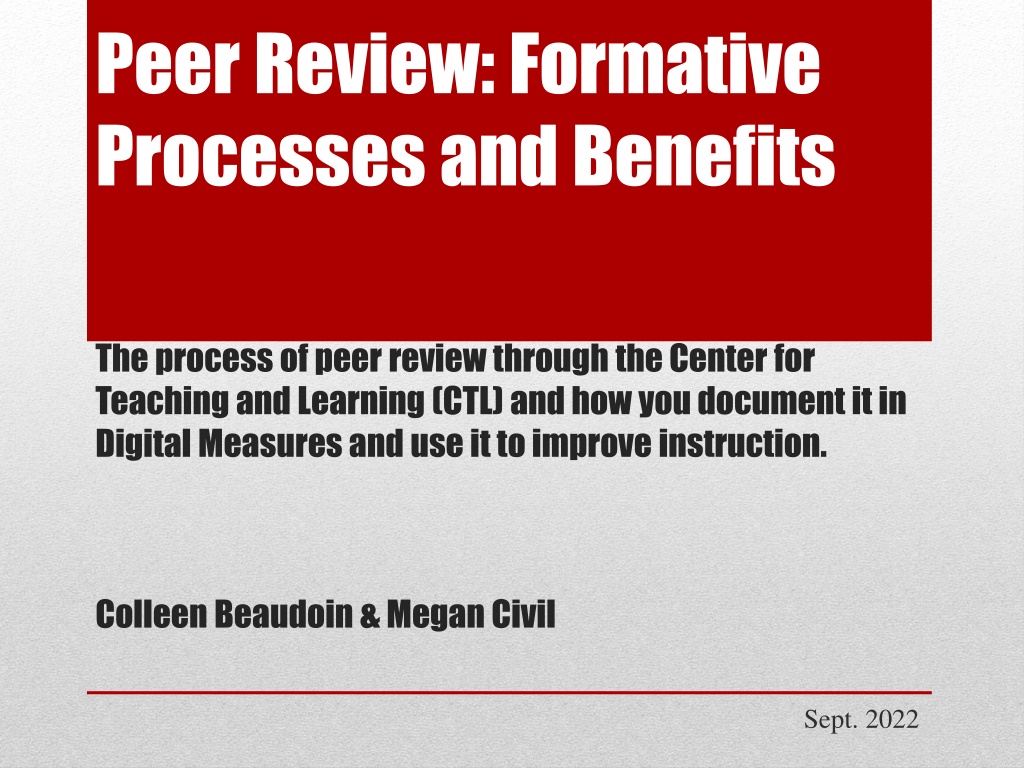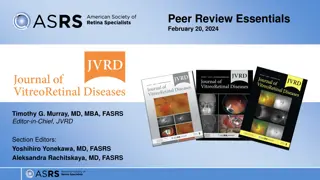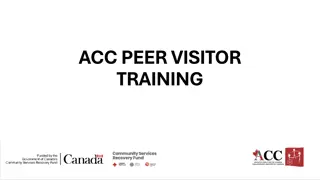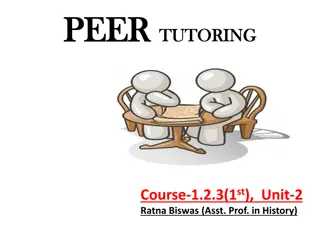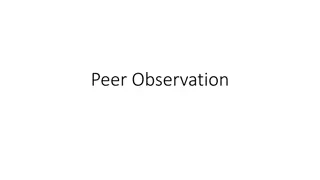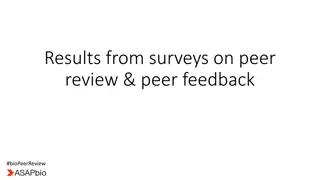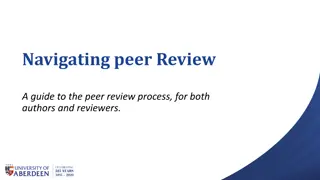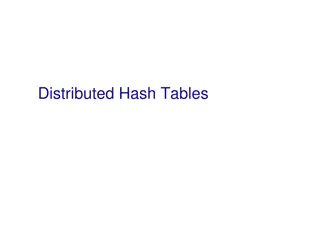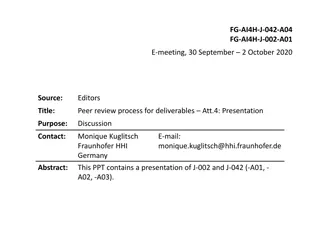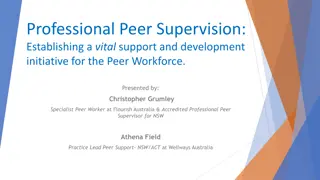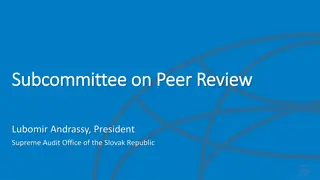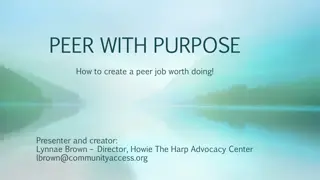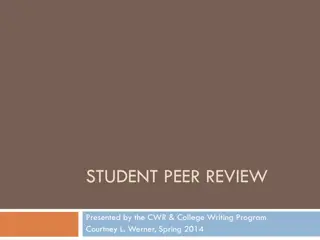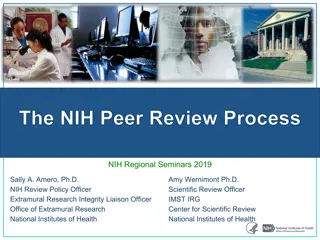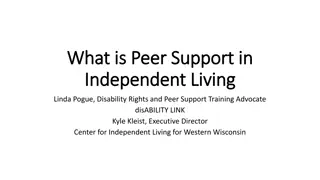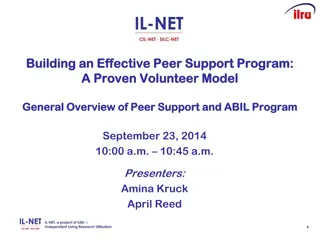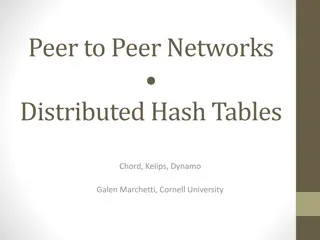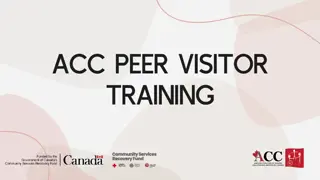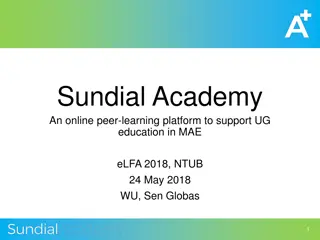Enhancing Teaching Through CTL Peer Review Process
Explore the formative processes and benefits of peer review at the Center for Teaching and Learning (CTL). The article delves into the voluntary nature of peer review at UT, outlining its three components and the step-by-step process from pre-observation to post-observation conferences. Discover how peer review can be utilized for improving teaching performance and its optional integration into annual evaluations. Additionally, learn about reporting procedures to CTL and available resources for faculty members.
- Teaching enhancement
- Peer review process
- Formative assessment
- Faculty development
- Center for Teaching and Learning
Download Presentation

Please find below an Image/Link to download the presentation.
The content on the website is provided AS IS for your information and personal use only. It may not be sold, licensed, or shared on other websites without obtaining consent from the author. Download presentation by click this link. If you encounter any issues during the download, it is possible that the publisher has removed the file from their server.
E N D
Presentation Transcript
Peer Review: Formative Processes and Benefits The process of peer review through the Center for Teaching and Learning (CTL) and how you document it in Digital Measures and use it to improve instruction. Colleen Beaudoin & Megan Civil Sept. 2022
Agenda CTL Peer Review at UT Process Where to find forms and information Watermark and Annual Evaluation Benefits of Peer Review
Peer Review at UT Voluntary Formative in nature Purpose is to enhance teaching performance 3 Components: - Pre-observation Conference - Observation - Post-observation Conference
Peer Review Process 1. Decide 2. Choose a faculty member to pair with 3. Select a peer observation form 4. Select the course and class session 5. Set up a pre-observation conference meeting 6. Schedule the class date for observation 7. Have the peer observer attend the class
Peer Review Process 8. Complete the post-observation conference 9. Optional: share on your annual evaluation.
Peer Review Process Reporting to CTL for record keeping: Email Mary Martinasek mmartinasek@ut.edu When observation is scheduled After post-observation conference *The CTL will not keep any specific feedback or forms on record. This is the property of the instructor and observer.
CTL Resources: http://www.ut.edu/ctl/ Under Faculty Resources
Using Peer Review for Annual Evaluation and/or Promotion CAL: Peer review of teaching is included in their new faculty mentor program and is encouraged as formative and valuable (but not mandatory) for all faculty. Also discussing peer review of part-time faculty. (Source: Michael Salczar, Asst. Dean) COB: Peer review is optional. (Source: Natasha Veltri, Associate Dean) CNHS: Peer review is optional. (Source: Mary Martinasek , Asst. Dean) CSSME: Peer review (CTL process) is optional. For Lecturers and ATPs, there is a College Peer Review process that must be used for promotion portfolios. However, the CTL process could be used to get some feedback before doing the promotion reviews. (Contact Kayte Branch, Asst. Dean) *Consult your current Assistant or Associate Dean if you have questions.
Using Peer Review for Annual Evaluation Access through Watermark on MyUTampa
Using Peer Review for Annual Evaluation Documentation to Include (optional): Upload the forms/feedback you received Discuss what you learned from the feedback Discuss the changes you will implement and new goals Describe how this process has impacted your teaching
Peer Feedback Considerations Increase student engagement Impact on student learning Update instructional methods
Peer Feedback Sample: LJ & CB Post agenda/objective Use handouts for longer problems Look to both sides of the room Ask students, What questions do you have? Chunk material Conduct beginning, middle, and ending reviews Incorporate comprehension checks
Benefits Allows opportunity for colleagues to collaborate and make thoughtful improvements to their teaching Provides an alternative to solely using student surveys, which can be biased, one-dimensional, and unrelated to teacher effectiveness Provides an opportunity for safe experimentation
Benefits Generates ideas of ways to improve instruction, increase rigor of coursework Offers opportunities to learn about various ways to structure classes Provides evidence for annual evaluations
I love doing peer review of teaching, especially of a faculty member in my department. It helps me have experience with younger faculty members and thus, I can provide much detail and support in departmental review committees. Dr. Jen Wortham, UT
Despite having been an educator for 14 years at a university level, I am consistently seeking new ideas to improve my teaching methods and enhance learning for my students. After Jen completed a peer-review, I received a very positive feedback. She gave me some original ideas which I will be incorporating in my teaching in the upcoming semester. One of the ideas suggested was to check students understanding of the concepts, theory and terminology in class (asking their understanding level using score 0-10, being 0 don t understand and 10 understand very well). Dr. Nauris Tamulevicius, UT
Formative peer reviews of teaching offer the opportunity for growth for both the reviewer and the reviewee. Isabeau Iqbal On the Teaching in Higher Ed Podcast #131 Isabeau Iqbal shares about the peer review of teaching on episode #131 of Teaching in Higher Ed.
